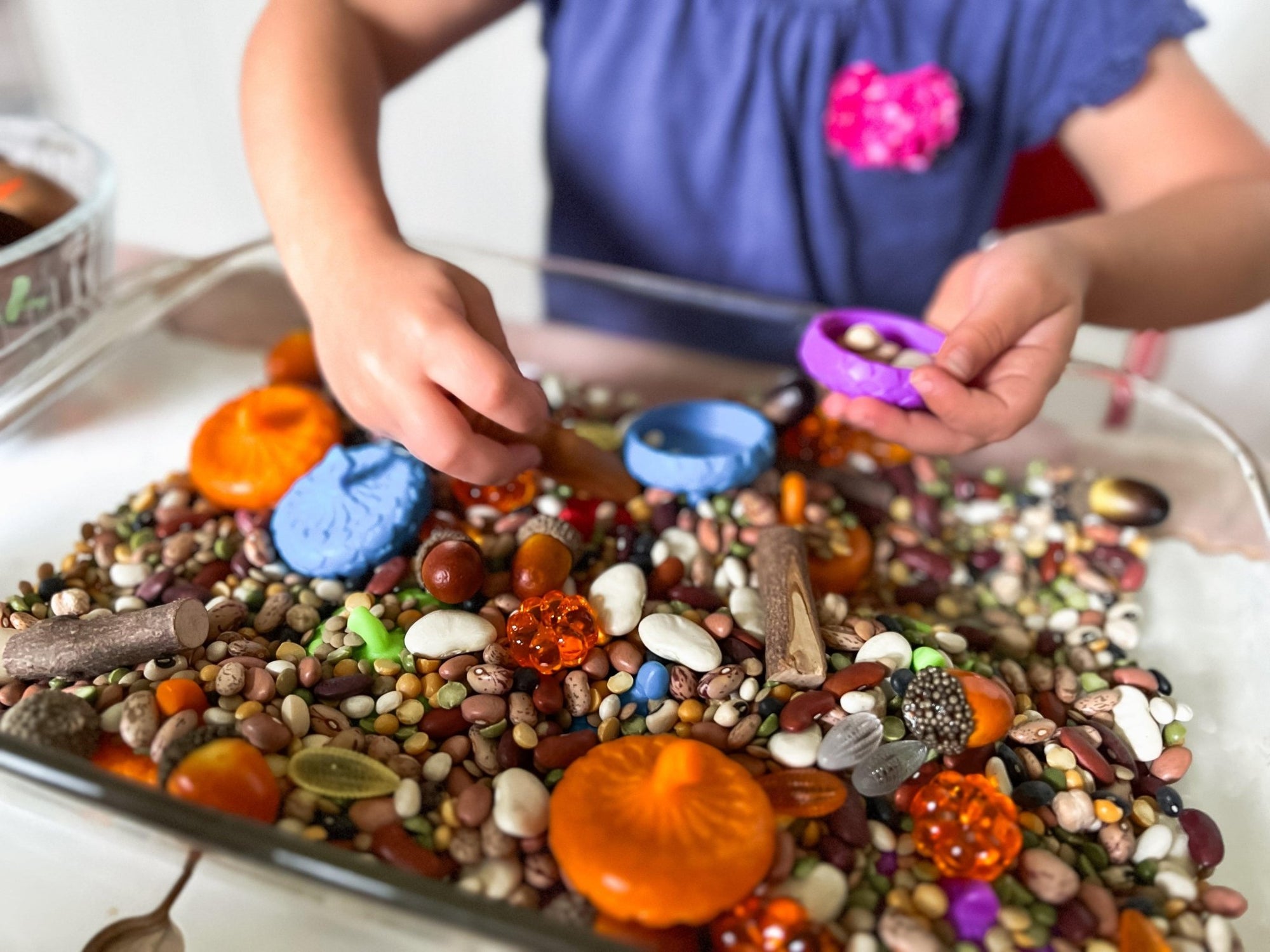Why Are Kids, Parents, and Educators So Crazy About Sensory Bins?
November 09 2023 – Knowledge Crates

Sensory play is all the rage in the world of kids' toys and activities ... even the big holiday toy catalogs are featuring sensory bins this year!
Here at Knowledge Crates, we're big fans as well ... so much so that we have a whole new line of Busy Bins to make sensory play fun and educational for kids, and no-prep, easy-to-clean-up for parents. 🙌
But why ARE kids, parents, and educators so crazy about sensory bins, anyway? We're so glad you asked ... 😉

What IS A Sensory Bin?
A sensory bin is a hands-on learning tool for children. It's essentially a container filled with materials and objects that engage their senses and invite open-ended play. Our Knowledge Crates Busy Bins are carefully curated around a theme to spark imaginative play.
Why Are Sensory Bins So Great for Kids?
Sensory bins stimulate the senses and encourage exploration, creativity, and cognitive development. They help children develop fine motor skills, sensory
perception, problem-solving abilities, language and communication skills, and creativity. Sensory play also aids in regulating emotions and can be a calming activity.
I Got My Busy Bin … Now What Do I DO With It?
Grown-ups new to sensory bins may not quite “get it” … some parents have said to us, “The bin looks SO pretty, I love it … but what do we actually DO with it?” The answer is simple: Don’t overthink it; THE KIDS KNOW WHAT TO DO. They truly do!
Tell Me More…
Kids instinctively know what to do with a sensory bin because sensory play is a natural and intuitive way for them to explore their environment and learn. Here's why they can figure it out on their own:
1. Curiosity: Children are naturally curious. When they encounter a sensory bin filled with interesting objects, their innate curiosity drives them to investigate and interact.
2. Sensory Stimulation: Sensory bins provide various sensory experiences, such as the sensation of touch, visual appeal, and sounds. Children are drawn to these sensory stimuli and will naturally want to touch, feel, and explore the materials.

3. Play Instinct: Kids are wired to engage in play, and they instinctively use the materials in creative ways during their playtime.
4. Trial and Error: Children learn through trial and error. They will naturally experiment with different actions, like scooping, pouring, stacking, and sorting, and discover cause-and-effect relationships.
5. Inherent Learning Drive: Children have a natural drive to learn and make sense of their world. Sensory play allows them to explore and understand concepts like texture, volume, weight, and even basic science principles, like sinking and floating.
6. Observation and Imitation: Kids often observe and imitate the actions of adults or older siblings. If they see someone interacting with the sensory bin, they're likely to mimic those actions and experiment with the materials themselves.
7. Creativity: Sensory bins encourage creativity and imaginative play. Kids can turn the materials into whatever they want – a construction site, a pretend kitchen, or a treasure hunt. Their creativity is bound to amaze you!
To sum it up: children instinctively know what to do with a sensory bin because it aligns with their natural curiosity, play instinct, and desire to learn. Every Knowledge Crates Busy Bin is a new invitation to play and learn!



0 comments